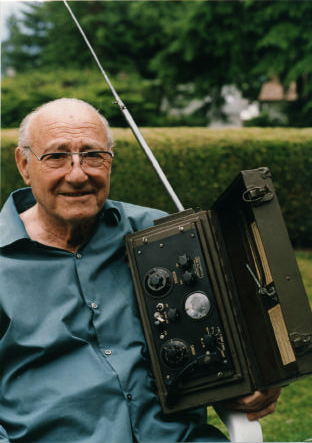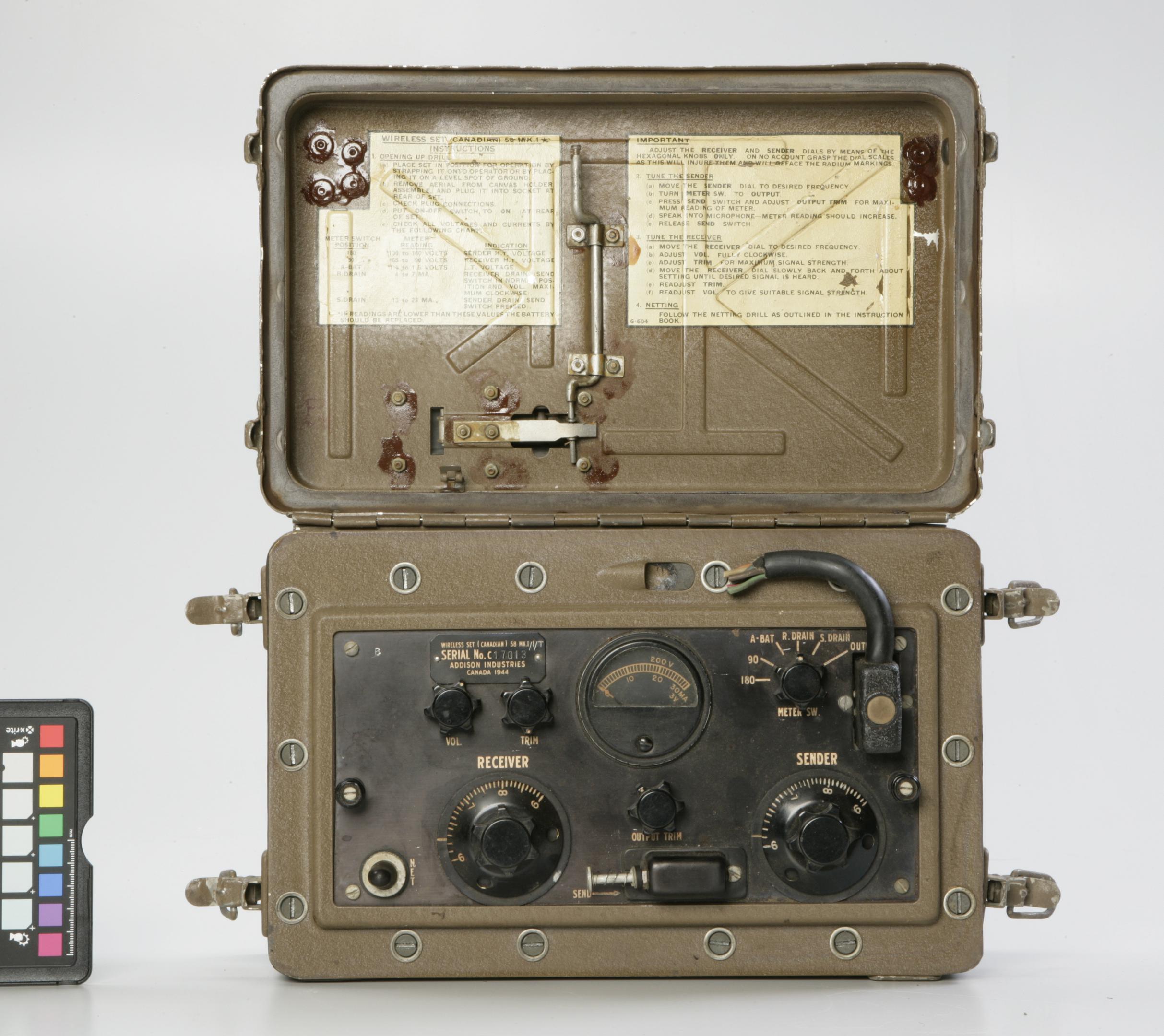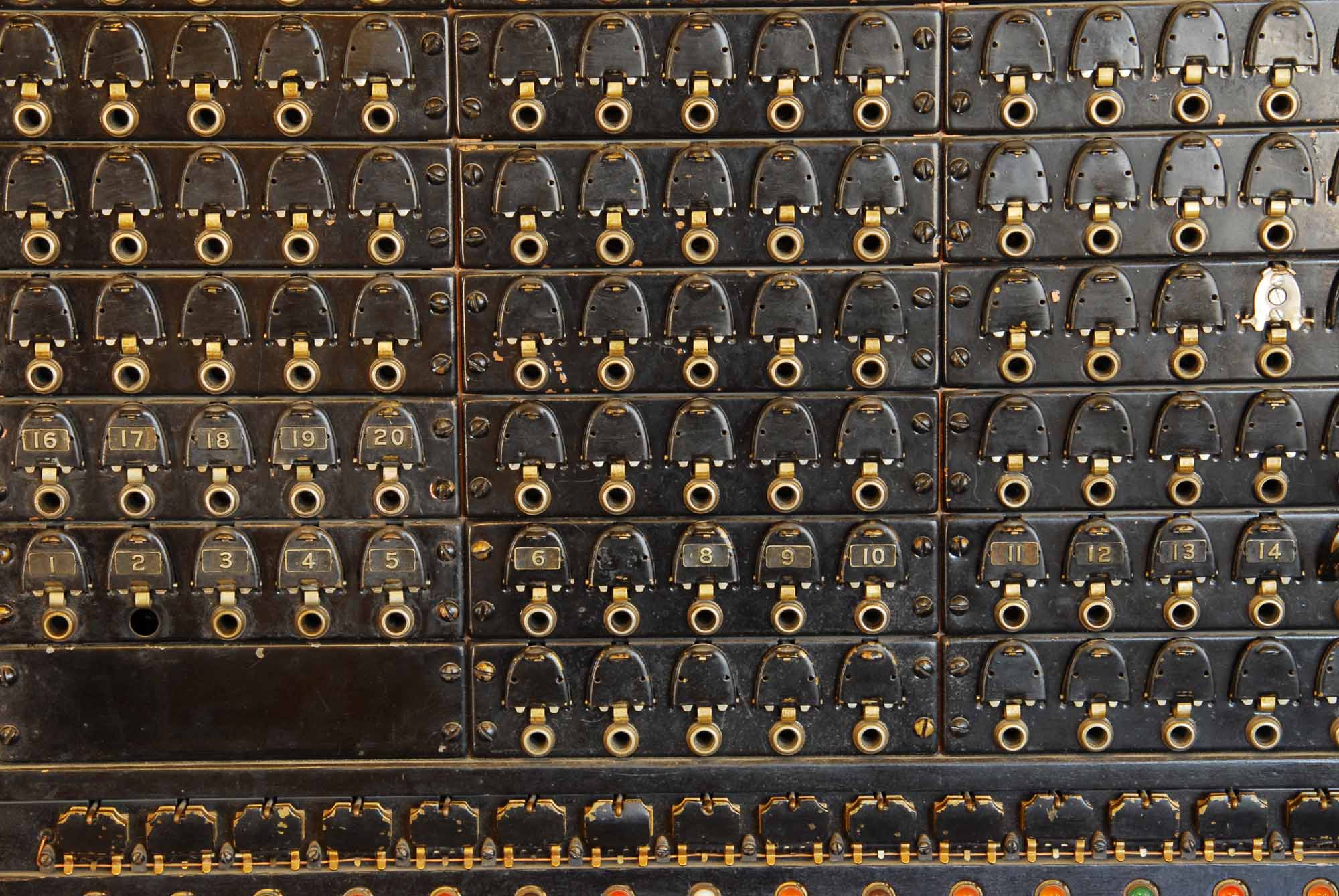Donald Lewes Hings, MBE, CM, inventor, engineer and telecommunications pioneer (born 6 November 1907 in Leicester, United Kingdom; died 25 February 2004 in Burnaby, BC). Donald Hings contributed to the development of electronic and geophysical technology for more than 60 years. He was the originator of more than 55 patents in Canada and the United States, but he is perhaps best known for his invention of the radio frequency system commonly known as the “walkie-talkie.” The walkie-talkie was adopted by the armed forces of Canada, the United Kingdom and the United States and was credited with providing soldiers with a reliable means of battlefield communication and saving the lives of untold numbers of Allied soldiers during the Second World War. Hings’s groundbreaking work opened the door for many of the radio frequency and communication systems used in the present day. (See also Telecommunications.)

Early Life and Education
Donald Hings’s parents separated when he was very young. He moved from the United Kingdom to Canada with his mother at the age of three. He attended elementary schools in Lethbridge, Alberta, and North Vancouver, British Columbia. To help support his mother, Hings left school early to work as a labourer at a plywood plant and did not receive a college education. An inheritance of real estate in Rossland, British Columbia, took Hings and his mother to the isolated Kootenay region of southeastern British Columbia.
Obsession with Radio
Young Donald Hings was obsessed with the relatively new marvel of the radio and was largely self-taught in its technology (see also Telecommunications). At the age of 14, he built his first crystal radio set. He became a HAM radio operator — a nickname for amateur radio operators — with the call letters “VE7BH,” with which he would be listed for more than 80 years. As a young man, Hings helped establish the first radio station in the Kootenays. In 1930, when Hings went to work for The Consolidated Mining and Smelting Company of Canada Limited (CM&S, later known as Cominco Ltd.) in Trail, British Columbia, he was encouraged to apply his expertise to solve communications problems that were common to aviators and people in isolated communities, such as mining locations in British Columbia’s interior.
Ground-to-Air Communications
Donald Hings designed geophysics equipment for the CM&S. The head of the company tasked him with designing a real-time system that would permit communications between aircraft and mines and other ground locations throughout remote areas of Western Canada and the Far North. In June 1930, a CM&S plane using experimental equipment made by Hings successfully communicated with a Canadian Pacific Railway telegraph station in Nelson, British Columbia, by means of continental code. This led to the development of lightweight aircraft radios used by the company’s fleet of planes. By 1938, Hings had developed a radio called the 10PC20 that allowed pilots and persons on the ground to communicate vocally.
A Portable Emergency Radio
In 1937, Donald Hings developed a portable emergency voice radio transceiver called the “Packset.” It had a special form of modulating, a process of modifying sound into radio waves. Hings nicknamed this form of modulation “Ever Expanding” and, according to a 2001 report by Guy L. Cramer, Hings described this form of modulation as “the key to everything.” The expanding carrier wave enhanced voice and gave the radio a range of 209 kilometres. The transmitter eliminated many of the flaws that existed in previously developed equipment and included a speech scrambler and noise filter. The new radio would be of vital use to geologists and pilots in the event of a plane crash or other emergencies. It was lightweight and had a buoyant, watertight container that was painted yellow in case a pilot had to drop it in a lake.
In 1939, Hings asked the CM&S about taking out a patent for his technological work. His employer’s response was that they were a mining company and not interested in patents for communications. Hings was free to patent the device himself. In September 1939, he travelled to Spokane, Washington, the nearest city with an authorized patent attorney. Hings spent a day trying to explain electronics to a senior patent attorney. When he returned to his hotel room, he learned that Canada was at war with Nazi Germany. (See also Second World War.)

War Service and the Walkie-Talkie
After obtaining a patent for the Packset, Donald Hings offered the wireless radio to the federal government and British high command for free for the duration of the war ( see Second World War). The Canadian and British military were interested in Hings’s radio. Following a successful demonstration for the Royal Canadian Air Force (RCAF) in Vancouver, Hings was invited to Ottawa for yet another demonstration for the federal government and the military. Hings and his young assistant, Thurb Cushing, carried out the demonstration on the grounds of the National Research Council Canada Laboratories building on Sussex Drive in Ottawa (see National Research Council of Canada). At the invitation of Colonel Harold Taber, the officer in charge of the Signals Research and Development Establishment, Hings became a volunteer member of the Royal Canadian Corps of Signals. (See also Canadian Armed Forces.) He was still officially a civilian, on loan from the CM&S.
A refrigerator factory in Toronto was converted into a workshop where Hings’s radio could be manufactured for military use. By war’s end, about 18,000 walkie-talkies had been made there. A series of radios was designed for specific purposes: for use in polar or tropical regions, for use by paratroopers and for use in landing craft like those employed in the D-Day landings in Normandy (see D-Day and the Battle of Normandy). Initially, the radio project was conducted in secrecy. However, in September 1943, the new device was unveiled at a press conference in Toronto that was being held in connection with an army enlistment drive. The Toronto Star reported in an article published on 24 September that “slangwise” the radio was called a walkie-talkie. The anecdote in which a soldier tells a reporter, “You can talk with it while you walk with it” may be apocryphal (fictional). The radio Hings designed was superior to similar equipment used by the Allies and Axis powers during the Second World War.
Post-War
In 1946, Donald Hings was made a Member of the Order of the British Empire. He was presented with the Order of Canada in 2001. Hings built a home in Burnaby, British Columbia, which became the centre of a community of scientists. As president and chief engineer of his own company, Electronic Laboratories of Canada Limited, Hings won many contracts from the Department of National Defence, including work on antenna and radar designs for the Distant Early Warning (DEW) Line across northern Canada (see Early-Warning Radar). His other projects included research and development of instrumentation for measurements of causes and effects of long-range air pollution vectors. Hings was a member of the Association of Professional Engineers and Geoscientists of British Columbia (APEGBC), the Association of Professional Engineers of Ontario (APEO) and the American Geophysical Union (AGU).

 Share on Facebook
Share on Facebook Share on X
Share on X Share by Email
Share by Email Share on Google Classroom
Share on Google Classroom






